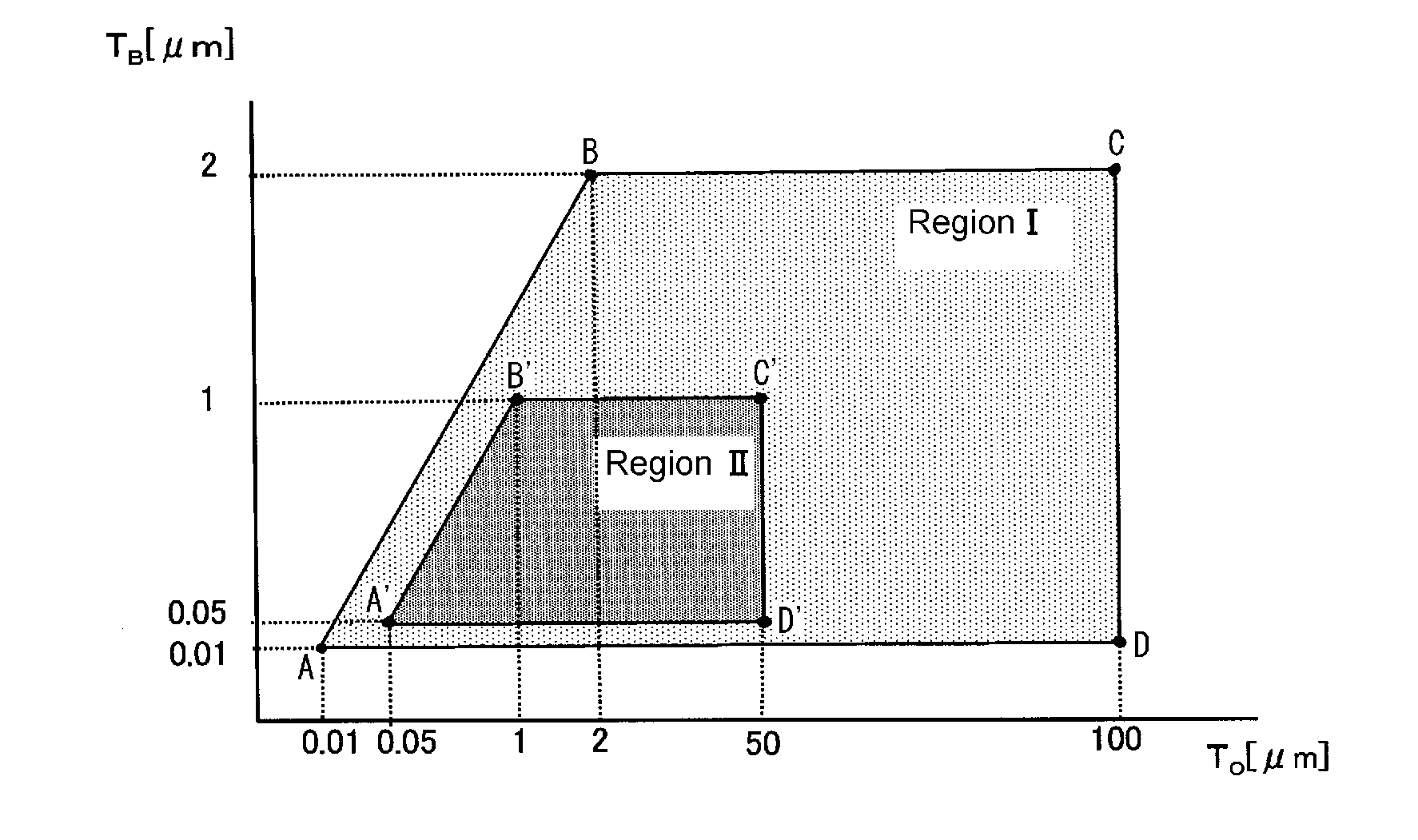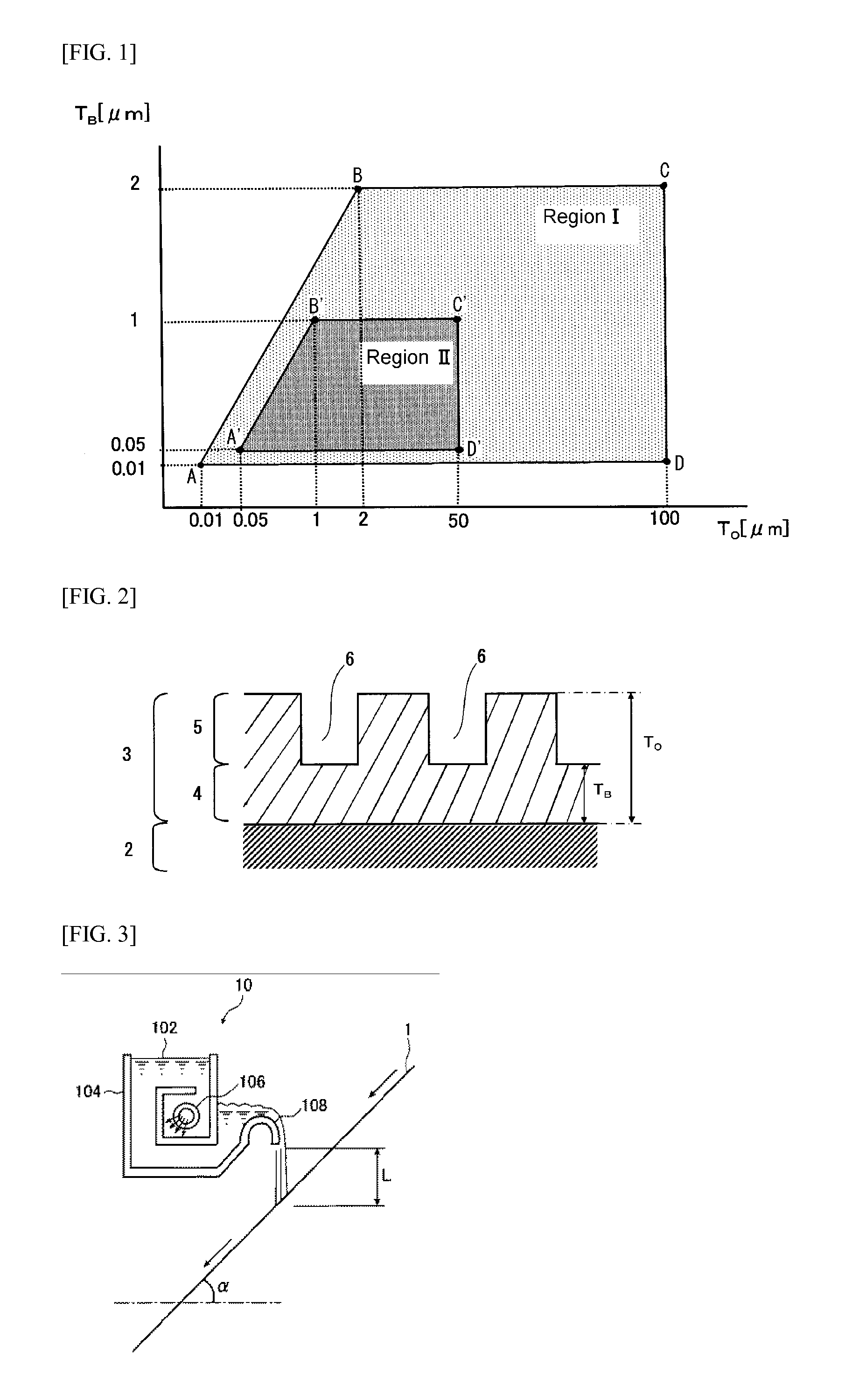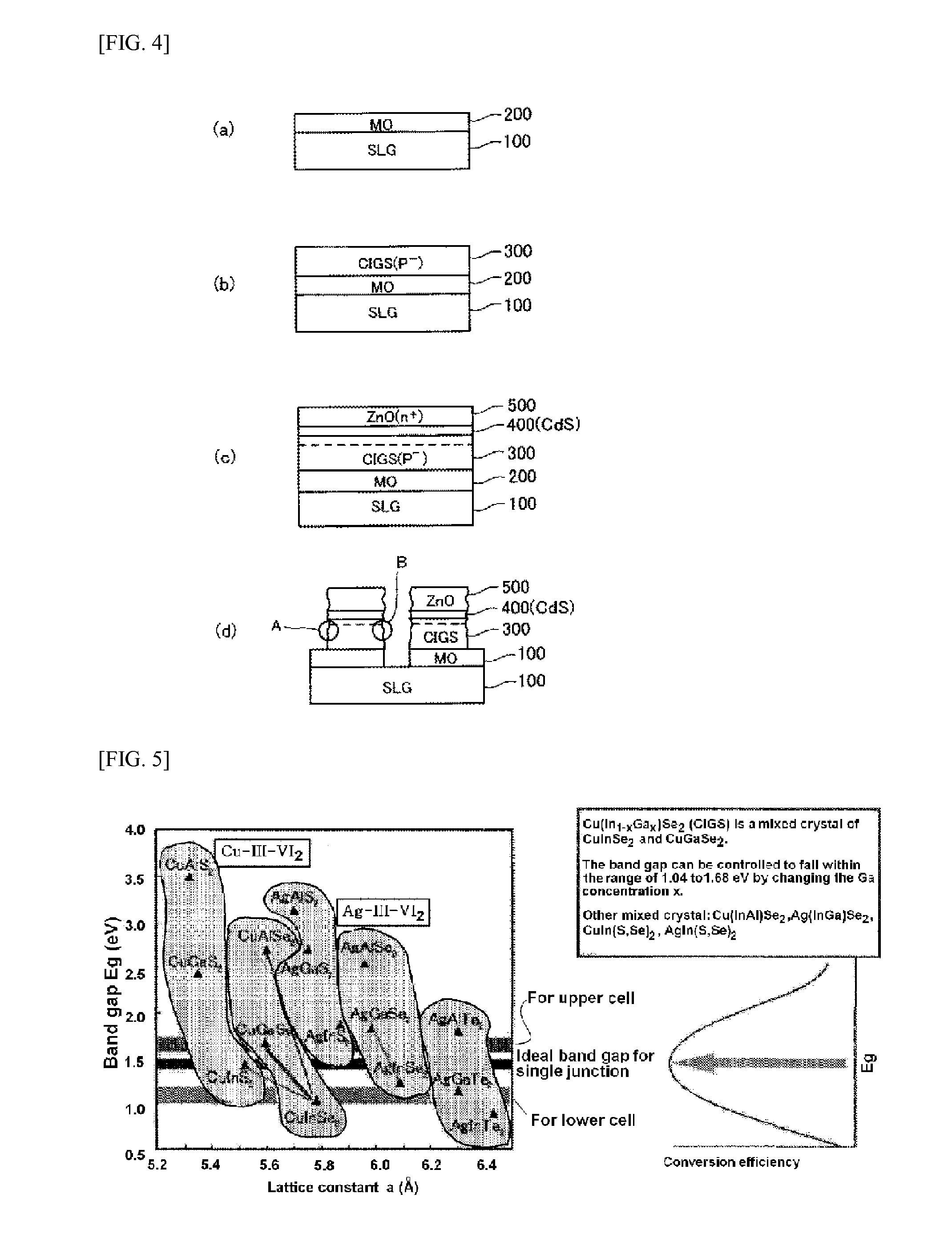Substrate for solar cell and solar cell
a solar cell and substrate technology, applied in the direction of thin material processing, semiconductor devices, electrical devices, etc., can solve the problems of glass substrates that cannot be easily manipulated, glass substrates that are fragile and must be treated with considerable care, and glass substrates that are even more fragile, etc., to achieve high thermal conductivity, less fragile, flexible, and high insulating
- Summary
- Abstract
- Description
- Claims
- Application Information
AI Technical Summary
Benefits of technology
Problems solved by technology
Method used
Image
Examples
example 1
1. Polishing of Aluminum Sheet
[0272]The aluminum material used was a custom made 5N aluminum sheet with an area of 5 cm×5 cm manufactured by Nippon Light Metal Co., Ltd. (analytical result (wt %): Al, 99.999% or higher; Cu, lower than 0.0002%; Si, lower than 0.0002%; Fe, lower than 0.0002%). The aluminum material was polished using the mechanical polishing method described below.
A1) Mechanical Polishing
[0273]A polishing machine LaboPol-5 (trade name) manufactured by Marumoto Struers K.K. was used.
[0274]A 5 cm square sample was bonded to a mirror finished metal block with a double-sided adhesive tape (removable tape 9455 manufactured by Sumitomo 3M Limited). The sample was polished with abrasive paper sheets in the order of increasing grit number (#80-#240-#500-#1,000-#1,200-#1,500) until no surface asperities were visually observed.
[0275]The abrasive paper sheets used were Waterproof Abrasive Paper (trade name) manufactured by Marumoto Struers K.K.
A2) Mechanical Polishing
[0276]A pol...
example 2
[0286]The sample 1-8 of Example 1 according to the invention was used as a substrate. After a Mo layer was formed on the anodized aluminum substrate by RF sputtering (high frequency sputtering), a NaF layer was formed thereon by RF sputtering, and a Mo layer was further formed thereon by RF sputtering. The resulting Mo / NaF / Mo multilayer film had a thickness of about 1.0 μm. A CuInGaSe2 thin film was deposited on the Mo film in a vacuum chamber. In the deposition of the CuInGaSe2 thin film, a Cu (the primary component of CuInGaSe2) evaporation source, an In evaporation source, a Ga evaporation source, and a Se evaporation source were provided in the vacuum chamber 1, and the Cu, In, Ga, Se evaporation source crucibles were heated at the degree of vacuum of about 10−7 Torr so that each element was evaporated. In this process, the crucible temperature was controlled as needed. The CuInGaSe2 thin film was formed to have a two-layer structure as described below. The first layer of the tw...
example 3
[0291]The sample 1-8 of Example 1 according to the invention was used as a substrate. After a Mo layer was formed on the anodized aluminum substrate by RF sputtering (high frequency sputtering), a NaF layer was formed thereon by RF sputtering, and a Mo layer was further formed thereon by RF sputtering. The resulting Mo / NaF / Mo multilayer film had a thickness of about 1.0 μm.
[0292]A CuInGaSe2 thin film was deposited on the Mo film in a vacuum chamber. Initially, while the vapor deposition rate from each of evaporation sources of In, Ga and Se was controlled to set the atomic composition ratio of Ga / (In+Ga) to about 0.30, a thin film composed of In, Ga and Se was deposited at a substrate temperature of 400° C. Next, a film composed of Cu and Se was deposited thereon at a substrate temperature of 550° C. while the vapor deposition rate from each of evaporation sources of Cu and Se was controlled. Finally, a thin film composed of In, Ga and Se was deposited thereon at a substrate tempera...
PUM
| Property | Measurement | Unit |
|---|---|---|
| temperature | aaaaa | aaaaa |
| thickness | aaaaa | aaaaa |
| pore diameter | aaaaa | aaaaa |
Abstract
Description
Claims
Application Information
 Login to View More
Login to View More - R&D
- Intellectual Property
- Life Sciences
- Materials
- Tech Scout
- Unparalleled Data Quality
- Higher Quality Content
- 60% Fewer Hallucinations
Browse by: Latest US Patents, China's latest patents, Technical Efficacy Thesaurus, Application Domain, Technology Topic, Popular Technical Reports.
© 2025 PatSnap. All rights reserved.Legal|Privacy policy|Modern Slavery Act Transparency Statement|Sitemap|About US| Contact US: help@patsnap.com



